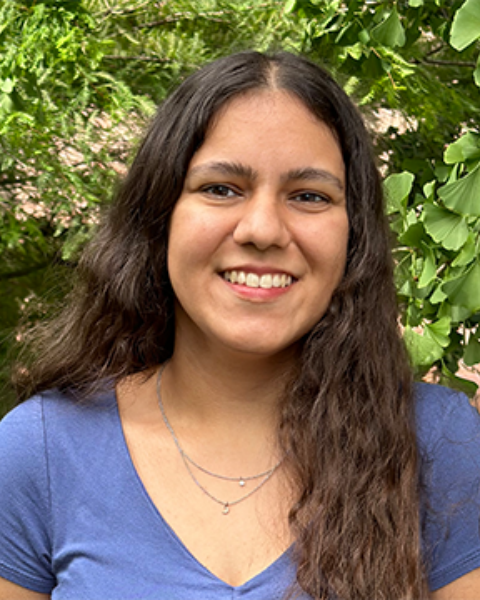Biomanufacturing
Biomanufacturing - Poster Session D
Poster N1 - Tuning Bioprinter Parameters to Achieve High Shape Fidelity Collagen Constructs
Friday, October 25, 2024
3:30 PM - 4:30 PM EST
Location: Exhibit Hall E, F & G

Julia Bellamy (she/her/hers)
PhD Student
Cornell University
Ithaca, New York, United States- LB
Lawrence Bonassar, PhD
Professor
Cornell University
Ithaca, New York, United States
Presenting Author(s)
Primary Investigator(s)
Introduction: 3D bioprinting fabricates novel patient-specific tissue engineered constructs by controlling the deposition of tunable bioinks in a layer-by-layer fashion. However, the geometric accuracy of the printed construct is highly dependent not only on the bioink formulation, but also the bioprinter input parameters. Collagen is a commonly used bioink due to its biocompatibility, temperature dependent gelation kinetics, and abundance in bodily proteins, but it is also a non-Newtonian fluid that has concentration, flow, and temperature dependent rheology. Extrusion bioprinters rely on process printing parameters related to the input conditions, such as nozzle diameter, printing height, and extrusion flow rate, and model slicing parameters related to the movement of the print head, such as printing speed, infill pattern, and area density. All of these variables affect the printing outcome, but they are calibrated with reference to less complex bioinks than that of collagen. The intricate relationship of bioink and printing variables results in a tedious guess-and-check procedure to ensure consistent fabrication. To better understand the interplay of collagen bioinks with these bioprinter variables, we experimentally optimized the following high-impact parameters related to process and slicing conditions: Extrusion multiplier modifies the total flow rate of the material; extrusion width adjusts the volume that would flow from the nozzle; infill density modifies the amount of material used to cover an area; and infill pattern modifies the printer path to covering that area. We quantified the effect of process and slicing parameters for bioprinted collagen constructs and developed a model to optimize the procedure.
Materials and
Methods: Collagen was extracted from rat tail tendons solubilized in 0.1% acetic acid following previously established protocols. The bioink was prepared by mixing the stock collagen (10 mg/ml or 15 mg/ml) with a working solution and 0.01 mg fluorescein for high contrast imaging. A modified Prusa i3 MK3 bioprinter was used to fabricate square (18x18x2 mm) and line constructs (Figure 1a). PrusaSlicer was used to modify 3D printing parameters of extrusion multiplier, extrusion width, infill pattern, and infill density. Collagen bioinks of 8 mg/ml and 10 mg/ml were loaded in 10 ml syringes, printed onto a petri dish held at 37ºC, and left in an incubator for 15 minutes to ensure complete gelation. Images were obtained of the structures using an iPhone 11 camera and analyzed using ImageJ to assess shape fidelity parameters (Figure 1b). For the line construct, uniformity U (ratio of the length of the printed line to a straight line) reveals gelation condition of the bioink, line width w describes the extrudate swell of the bioink, and angle fidelity AF (ratio of angle width a to line width w) informs about the resolution of the bioink. For the square construct, the distance deviation of the printed shape to the model was measured, and histogram values were utilized to classify the shape of the printed structure.
Results, Conclusions, and Discussions: Bioprinted collagen line constructs were consistently very uniform (U=1.03±0.03) regardless of collagen concentration and printing parameters (Figure 1c). A two-fold increase in extrusion multiplier resulted in a 0.58±0.23 mm and 0.86±0.24 mm increase in line width for lower (8 mg/ml) and higher (10 mg/ml) collagen bioinks, respectively (p < 0.0001) (Figure 1d). Similarly, an extrusion width of 0.4 mm resulted in a 0.32±0.07 mm and 0.19±0.05 mm thicker line than that of 0.38 mm and 0.45 mm, respectively (p=0.0001). Higher concentration collagen bioinks (10 mg/ml) had a 73% smaller variance in line width compared to lower concentration (8 mg/ml) (p < 0.05), suggesting that higher viscosity bioinks have a more consistent line width. Angle fidelity, where values nearer to 1 indicate a closer resemblance to the desired geometry, worsened with decreasing angle, with larger angles (90º) having a value of 1.82±0.17 and smaller angles (30º) a value of 3.41±0.58 (p < 00.5) (Figure 1e). Additionally, a higher collagen concentration was found to have a 21% better overall angle fidelity than that of lower concentration collagen bioinks. Bioprinted square constructs were analyzed using a deviation metric, and the overall shape of the construct was classified by the spread, with smaller spreads ( < 2 mm) more closely replicating the desired geometry (Figure 1f). Models for shape fidelity parameters with collagen concentration, printing, and slicing parameters were developed. A three-parameter model revealed that multiplier and infill density had a significant effect (p < 0.05) on predicting the area difference between the printed and desired construct geometry, with the coefficients changing from 1.55 and -0.005 (8 mg/ml) to 1.10 and -0.01 (10 mg/ml), respectively (Figure 1g).
We have successfully optimized collagen extrusion bioprinting parameters and revealed the large influence of multiplier and infill density on high shape fidelity. The tuned printing parameters (multiplier = 0.18; extrusion width = 0.4; infill density = 2% or 5%, and monotonic pattern) allowed a 104-fold improvement in shape fidelity.
Acknowledgements (Optional):
